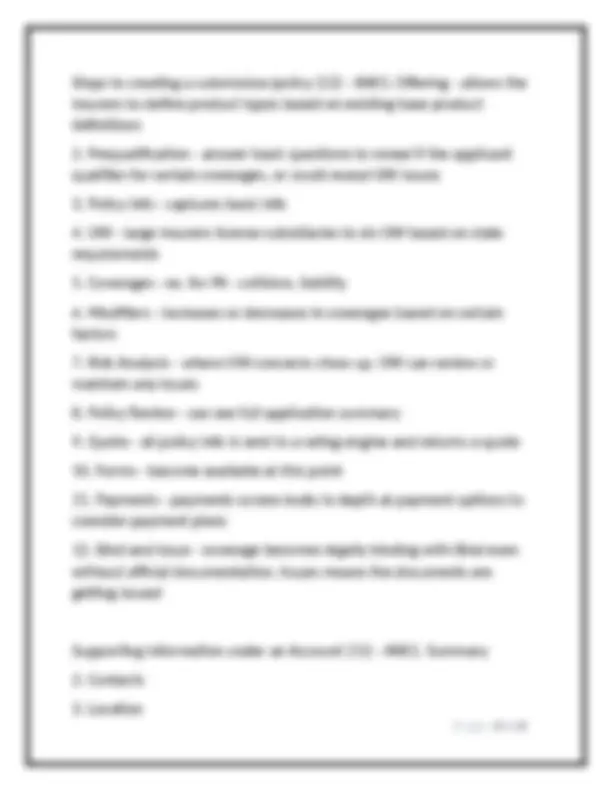
























Study with the several resources on Docsity

Earn points by helping other students or get them with a premium plan


Prepare for your exams
Study with the several resources on Docsity

Earn points to download
Earn points by helping other students or get them with a premium plan
Community
Ask the community for help and clear up your study doubts
Discover the best universities in your country according to Docsity users
Free resources
Download our free guides on studying techniques, anxiety management strategies, and thesis advice from Docsity tutors
Guidewire Policy Center Professional Exam 2024-2025. Questions and Correct Answers. Graded A
Typology: Exams
1 / 30

This page cannot be seen from the preview
Don't miss anything!























2 Ways to create documents – ANS
A clause can have multiple subclauses of multiple levels Color codes in sotry cards - ANSDark Green - Coverage attributes Light Green - Coverage Term Attributes Lightest green - Coverage Term Option attributes Components of UW authority - ANSUW Issue - a specific occurance on a policy transaction where an UW condition was true. Created when a condition gives undesirable results based on data on the policy or account. These can stop jobs until approved UW Rule - Describes how the policy transaction is affected by the UW issues and how issues can be approved. Rules include conditions which will raise an UW issue Authority Grant - The ability to approve UW issues and to what degree Authority profile - a group of authorities that can be given to a user, allowing the user to approve UW issues Coverage Pattern Attributes - ANSDetermines whether or not each relevant coverage is offered on a policy and whether the user can accept or decline Coverage Table - ANSEach coverage is associated with a coverage lookup table storing availability criteria for coverages
Document Production - ANSCreate a draft document by merging Template with Field Values Endorsement numbers - ANSIndicates the order that a form was added to the policy (apply to a specific policy period (sequential starting at 1) Examples of PC functional requirements (6) - ANS1. Product - coverages and coverage terms
The can have access to ao build groups, org and permissions for their own orgs but not others How to override an automatic renewal - ANSPre-configure renewal directions - this puts the expiring term into either automatic nonrenewal or manual renewal Info you need to write Forms requirements (9) - ANS1. Form number
Rules for groups (5) - ANS1. Users can belong to more than 1 group
Steps to creating a submission/policy (12) - ANS1. Offering - allows the insurers to define product types based on existing base product definitions